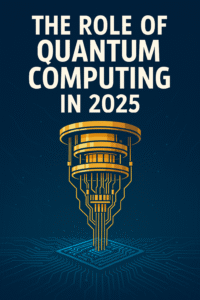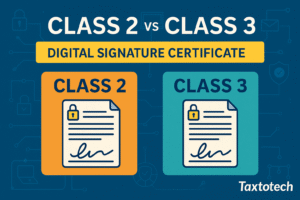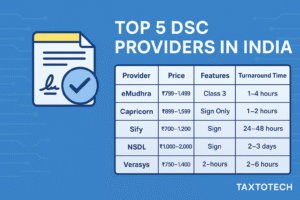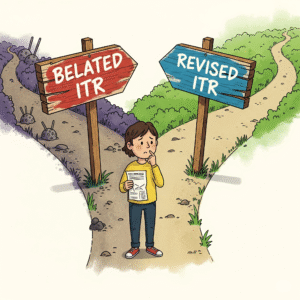For many, the most dreaded part of tax season isn’t the calculations, but the tedious process of gathering and organizing financial data. From sifting through bank statements and credit card bills to manually entering transactions into spreadsheets or software, it’s a time-consuming chore prone to human error and overlooked details.
But what if your tax software could automatically pull data directly from your bank accounts, credit cards, and other financial platforms, intelligently categorize transactions, and then use that information to pre-fill your tax return and find every eligible deduction? At Taxtotech, we’re here to tell you that this vision of seamless integration isn’t a distant dream; it’s a powerful reality thanks to AI tools that intelligently connect your bank accounts to your tax return. This breakthrough capability is revolutionizing efficiency, accuracy, and ultimately, your financial peace of mind.
The Data Disconnect: Why Manual Entry is a Problem
In the traditional tax preparation model, there’s a significant “data disconnect” between your everyday financial activity and your annual tax reporting. Here’s why that’s problematic:
- Time-Consuming: Manually entering hundreds or thousands of transactions from various accounts is a monumental task that eats up valuable time.
- Prone to Errors: Even the most diligent person can make transcription mistakes, leading to inaccuracies that could result in penalties or missed savings.
- Missed Deductions: Without an automated system to flag potential write-offs, many legitimate expenses go unnoticed because taxpayers simply don’t remember them or aren’t aware they are deductible.
- Lack of Real-Time Visibility: You only get a clear picture of your tax situation once all data is compiled, often right before the deadline.
This manual data dance is not only inefficient but also a source of significant stress for individuals and businesses alike.
The Core Technology Behind Seamless Integration
The magic of seamless integration – specifically how AI tools connect your bank accounts to your tax return – relies on a sophisticated interplay of technologies:
- APIs (Application Programming Interfaces): Think of APIs as digital translators or messengers. They are standardized sets of rules that allow different software applications (like your bank’s system and your tax software) to communicate securely and exchange data with each other. When you authorize a connection, the API acts as the bridge.
- Financial Aggregators: These are third-party services (e.g., Plaid, Finicity, Yodlee) that specialize in securely connecting to thousands of financial institutions worldwide. They act as intermediaries, streamlining the process of pulling data from diverse banks, credit unions, investment platforms, and even crypto exchanges, and then formatting it in a way that tax software can understand. They eliminate the need for tax software developers to build direct connections to every single bank.
- AI (Artificial Intelligence) – Specifically NLP & ML: Once the raw transaction data flows in via APIs and aggregators, AI takes center stage.
- Natural Language Processing (NLP): Analyzes the often-cryptic descriptions of transactions (“AMZ*Prime,” “STARBUCKS #1234”) to understand their context and purpose. It can infer, for example, that “Uber to SFO” for a freelancer might be business travel, or “Microsoft 365” is a software subscription.
- Machine Learning (ML): Learns from vast datasets of categorized transactions and tax rules. It builds predictive models that can accurately categorize new, uncategorized transactions. The more data it processes (anonymously, across many users), the smarter it gets at recognizing patterns that indicate deductible expenses or income types.
How AI Tools Connect Your Bank Accounts to Your Tax Return: A Step-by-Step Breakdown
Let’s break down the journey of your financial data from your bank to your tax return, empowered by AI tools:
Step 1: Secure Connection & Authorization
You initiate the process within your AI tax software by choosing to link your bank accounts or credit cards. You’ll be redirected to a secure portal (often managed by a financial aggregator) where you enter your banking credentials. This connection uses robust encryption and is typically “read-only,” meaning the tax software can view your transaction history but cannot initiate any transactions. You grant explicit permission for this data access.
Step 2: Real-Time Data Fetching
Once authorized, the AI tax software (via the financial aggregator’s APIs) begins fetching your transaction data. This isn’t a one-time download; many systems offer continuous or real-time syncing, ensuring your tax software always has the most up-to-date financial picture. This includes transaction dates, amounts, descriptions, and merchant names.
Step 3: AI-Powered Categorization
This is where the true power of AI shines. The raw transaction data is fed into the AI’s NLP and ML algorithms:
- Initial Classification: The AI automatically categorizes transactions into broad groups (e.g., “Dining,” “Groceries,” “Utilities,” “Business Services”).
- Tax-Relevant Tagging: Crucially, it then identifies which of these categories are potentially tax-deductible or relevant to specific tax forms. For instance, “Home Depot” purchases for a homeowner might be flagged for potential home improvement credits, while “Adobe Creative Cloud” for a graphic designer is flagged as a business expense. The AI learns from your past categorizations and from its vast dataset to suggest the most likely tax category.
Step 4: Deduction Identification & Suggestion
Building on the categorization, the AI looks for patterns that indicate specific deductions or credits you might qualify for.
- If it sees frequent small payments to a particular charity, it might suggest consolidating them for a charitable deduction.
- If it detects a series of payments for medical services, it can prompt you to consider the medical expense deduction and ensure all related costs (even travel to appointments) are considered.
- For self-employed individuals, AI can highlight software subscriptions, business meals, or office supplies directly from their bank statements.
Step 5: Reconciliation & Error Flagging
The AI constantly cross-references the incoming data with your previously entered information or other connected accounts. It can:
- Flag duplicate entries.
- Identify missing transactions.
- Alert you to inconsistencies that might indicate an error or a potential red flag for tax authorities.
- Ensure that your bank statements align with what’s being reported, promoting accuracy and audit readiness.
Key Stages of AI-Powered Financial Integration for Taxes
| Stage | How AI Contributes | Benefit for Taxpayer |
| 1. Secure Connection | Manages encrypted, read-only API links to financial institutions. | Ensures data safety and privacy; no manual login to each bank. |
| 2. Data Fetching | Automated, continuous syncing of new transactions. | Real-time financial overview; no need to download statements manually. |
| 3. Categorization | NLP analyzes descriptions; ML learns and auto-categorizes transactions. | Eliminates manual sorting; greatly reduces errors and saves time. |
| 4. Deduction ID | ML identifies patterns for potential deductions/credits; proactive prompting. | Maximizes refund; uncovers hidden deductions; prevents missed savings. |
| 5. Reconciliation | Cross-references data, flags inconsistencies, ensures data integrity. | Builds confidence in accuracy; reduces audit risk; ensures compliance. |
| 6. Form Population | Auto-fills relevant tax forms directly with categorized data. | Accelerates filing; minimizes transcription errors; streamlines the entire process. |
The Transformative Benefits of Seamless Integration for Taxpayers
The advantages of allowing AI tools to connect your bank accounts to your tax return are profound:
- Unparalleled Time Savings: Say goodbye to hours spent manually reviewing statements and entering data. The AI does the heavy lifting, giving you back precious time.
- Boosted Accuracy and Reduced Errors: Automation dramatically cuts down on human error, ensuring your tax return is correct and compliant.
- Maximized Deductions and Credits: By analyzing every transaction, AI significantly increases the chances of identifying and claiming every eligible deduction, leading to a larger refund or a smaller tax bill.
- Real-Time Financial Visibility: With continuous syncing, you can see your approximate tax liability or refund status throughout the year, enabling better financial planning.
- Stress Reduction: The peace of mind that comes from knowing your data is accurately captured and optimized is invaluable.
- Audit Readiness: All your financial data is neatly categorized and securely stored, making it easy to provide documentation if ever requested by tax authorities.
Beyond Bank Accounts: A Look at Broader Integration
While bank and credit card integration is foundational, the concept of seamless integration extends much further. The best AI tax software platforms are increasingly connecting with:
- Investment Platforms: Automatically importing trades, dividends, and capital gains/losses for accurate reporting.
- Payroll Services: Pulling W-2 and 1099 data directly, especially useful for self-employed individuals and small businesses.
- E-commerce Platforms: For online sellers, integrating with platforms like Shopify or Amazon Seller Central to track income and business expenses.
- Crypto Wallets & Exchanges: Managing the complex reporting requirements for cryptocurrency transactions.
- Property Management Software: For landlords, tracking rental income and deductible expenses automatically.
Impact of Integrated AI on Different Taxpayer Profiles
| Taxpayer Profile | Key Integration Benefit for Taxes | Example AI-Driven Action |
| Freelancer / Gig Worker | Auto-categorizes business expenses, identifies home office costs, mileage. | Flags “Adobe Subscription” as a business expense; calculates home office deduction. |
| Homeowner | Tracks mortgage interest, property taxes, energy efficiency upgrades. | Automatically imports mortgage interest from lender; prompts about energy credits. |
| Investor | Imports stock trades, dividends, crypto transactions; optimizes capital gains/losses. | Identifies optimal capital loss harvesting opportunities from brokerage statements. |
| Parent | Categorizes child care costs, education expenses, dependent-related medical. | Identifies payments to daycare providers; flags college tuition payments. |
| Small Business Owner | Consolidates all business income/expenses; tracks inventory, payroll. | Integrates with accounting software to provide a holistic view for tax prep. |
Ensuring Security and Privacy in Integrated Systems
The thought of AI tools connecting your bank accounts to your tax return naturally raises questions about security and privacy. Reputable AI tax software platforms prioritize this with:
- Bank-Level Encryption: Your data is encrypted both in transit and at rest, protecting it from unauthorized access.
- Read-Only Access: The software typically only has permission to view your transaction history, not to move or manage your funds.
- Anonymization & Aggregation: For training AI models, data is often anonymized and aggregated, meaning individual identifiers are removed before it’s used for pattern recognition across a large user base.
- Compliance with Regulations: Adherence to strict financial data privacy regulations (e.g., GDPR, GLBA) ensures your information is handled responsibly.
- Multi-Factor Authentication (MFA): Adds an extra layer of security to your account login.
Always verify the security measures and read the privacy policy of any software before connecting your accounts.
Conclusion: Embrace a Smarter, Simpler Tax Season
The ability of AI tools to connect your bank accounts to your tax return is nothing short of revolutionary. It eliminates the manual drudgery of data entry, significantly boosts accuracy, and ensures you capture every possible deduction and credit. This seamless integration empowers you to transform your tax preparation from a daunting annual task into an efficient, optimized, and stress-free experience.
At Taxtotech, we encourage you to embrace this cutting-edge technology. By leveraging AI-driven integration, you’re not just filing taxes; you’re gaining invaluable insights into your financial life and building a foundation for smarter financial planning. It’s time to let your digital tax guide do the heavy lifting.
We want to hear from you, our digitally savvy Taxtotech Readers!
- Have you used AI tax software that seamlessly integrated with your bank accounts? What was your experience?
- What’s the biggest benefit you’ve found from automated data import for tax purposes?
- What other financial accounts or platforms would you like to see AI tax software integrate with in the future?
Share your thoughts and experiences in the comments below! Your contributions help our community learn and grow. And for more insights into how technology is simplifying your financial world, keep exploring here at https://taxtotech.com. Let’s make every tax season a breeze!
FAQ
Q1: How do AI tools securely access my bank account information?
A1: Reputable AI tax tools use secure APIs (Application Programming Interfaces) through financial data aggregators (like Plaid or Finicity) to connect to your bank accounts. These connections are heavily encrypted and are typically “read-only,” meaning the software can pull your transaction history but cannot initiate any transactions or access your funds. You also provide explicit authorization for this access.
Q2: What types of accounts can AI tax software typically connect to?
A2: Most advanced AI tax software can connect to a wide range of financial accounts, including checking accounts, savings accounts, credit cards, investment brokerage accounts, and increasingly, even cryptocurrency exchanges and payroll services. This comprehensive integration provides a holistic view of your financial activity for tax purposes.
Q3: How accurate is AI at categorizing transactions from my bank statements for tax purposes?
A3: AI uses advanced Machine Learning (ML) and Natural Language Processing (NLP) to categorize transactions. While it’s highly accurate and constantly improving by learning from vast datasets, initial categorizations may require review. The more you use the software and confirm/correct its categorizations, the smarter and more accurate it becomes at understanding your specific spending patterns and their tax implications.
Q4: Will connecting my bank account make my tax return more likely to be audited?
A4: No, connecting your bank account to AI tax software does not increase your audit risk. In fact, it can significantly reduce audit risk by improving the accuracy of your tax return. By automating data entry, catching inconsistencies, and ensuring all relevant deductions are identified and properly categorized, the software helps produce a more compliant and robust tax filing.
Q5: What are the main benefits of seamless bank integration for my taxes?
A5: The main benefits include massive time savings from eliminating manual data entry, significantly improved accuracy that reduces errors and penalties, maximization of deductions and credits by intelligently identifying eligible expenses, real-time visibility into your tax situation throughout the year, and increased peace of mind due to organized and audit-ready financial data.

















